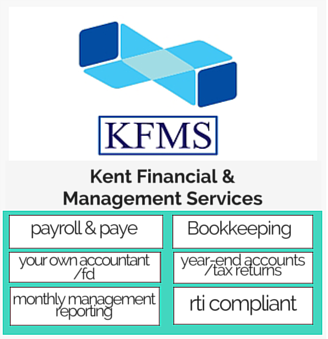For several years, dividends have proven to be a tax effective way for owner/shareholders to extract profits from their company. Whilst salary and bonuses are tax-deductible for the company, and will currently save 20% corporation tax, this saving does not fully offset the substantial costs of National Insurance contributions (NIC) which accrue when making payments through the PAYE system.
Employees’ NIC start at 12%, and employers’ NIC stands at 13.8%. At some salary levels they are worth more to HMRC than the basic rate of income tax. Currently – and particularly while there is no additional income tax to pay on dividend income up to the personal allowance and basic rate limit (£42,385 in 2015/16) – dividends are a clear winner.
An example of dividend salary under the current rules and the effect of the new rules is shown at the end of this article.
The Proposed Changes
- The 10% dividend tax credit on dividends will be abolished
- The first £5,000 of dividend income in each tax year will be tax-free.
- Dividends above this level will be taxed at 7.5% (basic rate), 32.5% (higher rate), and 38.1% (additional rate)
- Dividends received by pensions and ISAs will be unaffected
- Dividend income will be treated as the top band of income
- Individuals who are basic rate payers who receive dividends of more than £5,001 will need to complete self-assessment returns from 6 April 2016It is worth noting that the Employment Allowance which currently allows employers to claim up to £2,000 of NICs per year will not be available in 2016/17 where the director is the sole employee. For all other employees the allowance is being increased to £3,000
 How will it Work
How will it Work
The proposed changes are aimed to tax small companies who pay a small salary designed to preserve entitlement to the State Pension, followed by a much larger dividend payment in order to reduce National Insurance costs.The dividend allowance will be available to anyone who has dividend income. However, it has been designed in such a way that those with significant dividend income will pay more tax than those with smaller amounts.The new rates of dividend tax will apply only to the amount of dividends received in excess of £5,000 (excluding any dividend income paid within an individual savings account (ISA)). It is important to note that the dividend allowance will not reduce total income for tax purposes, and dividends within the allowance will still count towards the basic or higher rate tax bands. This means that the dividend allowance is effectively treated as a zero rate of tax on the first £5,000 of dividends. This differs from other tax allowances (for example, the personal allowance) which are deducted from taxable income.
HMRC has published a Dividend Allowance Factsheet
How can you minimise the effects?
The most obvious idea is to transfer shareholdings into ISAs. However, a portfolio that produces £5,000 in dividends is likely to be worth roughly £130,000. Even if you hold very high-yielding shares you would need about £63,000 to generate £5,000 a year,
With the annual ISA allowance at about £15,000, it would take at least four years to transfer all your shares to Isas. Married couples could use both allowances, however.
You can’t simply move shares to an ISA: you have to sell them, deposit the proceeds in an ISA and then buy them back within the tax-free scheme. One trick is to do this when markets fall, as you can sell more shares and still stay within the ISA limit.
Even if your dividend income is less than £5,000 now, you may wish to consider switching to ISAs because the payments could rise in future.
The huge benefit of extracting profit by way of dividends is shown below:
2015/16 2015/16 2016/17 No Dividend With Dividend With Dividend NET PROFIT 42,485 42,485 42,485 Gross Salary 35,560 35,560 35,560 Net Dividends 0 27,540 27.540 Total Pay 35,560 35,560 35,860 Dividend Tax 0 0 1,470 PAYE Income Tax 5,000 0 0 Employees NIC 3,305 0 0 Total Employee PAYE & NIC 8,305 0 0 Employer NIC 3,793 0 0 Corporation Tax 0 6,885 6,885 TOTAL TAX & NIC 12,098 6,885 8,355 NET PAY TO OWNER/DIRECTOR 27,255 35,560 34,130
Note: A salary of £8,060 has been used as this amount will not attract NIC but allow the owner/director to qualify for State Pension Benefits.
Conclusions
- If you are a LTD company it will still be tax efficient to pay yourself through dividends
- It’s not all a bed of roses as you will be paying more tax than you are used to and you will need to budget for this. £1,470 worse off in the example or £123/month. Not an insignificant amount
DISCLAIMER: This article is for guidance only and professional advice should be obtained before acting on any information contained therein. We cannot accept any responsibility for loss occasioned to any person as a result of action taken or refrained from in consequence of the contents of this publication.
Peter Andrews, Director Kent Financial & Management Services
